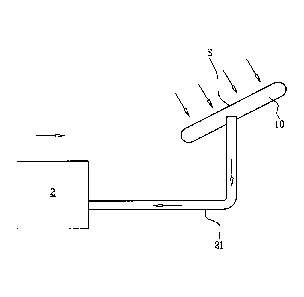Some of the information on this Web page has been provided by external sources. The Government of Canada is not responsible for the accuracy, reliability or currency of the information supplied by external sources. Users wishing to rely upon this information should consult directly with the source of the information. Content provided by external sources is not subject to official languages, privacy and accessibility requirements.
Any discrepancies in the text and image of the Claims and Abstract are due to differing posting times. Text of the Claims and Abstract are posted:
| (12) Patent: | (11) CA 3048826 |
|---|---|
| (54) English Title: | A DESTACKER APPARATUS |
| (54) French Title: | APPAREIL DE DESEMPILEMENT |
| Status: | Granted and Issued |
| (51) International Patent Classification (IPC): |
|
|---|---|
| (72) Inventors : |
|
| (73) Owners : |
|
| (71) Applicants : |
|
| (74) Agent: | MBM INTELLECTUAL PROPERTY AGENCY |
| (74) Associate agent: | |
| (45) Issued: | 2023-03-14 |
| (22) Filed Date: | 2019-07-08 |
| (41) Open to Public Inspection: | 2020-01-30 |
| Examination requested: | 2020-07-22 |
| Availability of licence: | N/A |
| Dedicated to the Public: | N/A |
| (25) Language of filing: | English |
| Patent Cooperation Treaty (PCT): | No |
|---|
| (30) Application Priority Data: | ||||||
|---|---|---|---|---|---|---|
|
The destacker apparatus (1), comprises: a succession of conveyors (10, 11, 12) arranged inclined relative to the horizon, each comprising a mobile surface (S) for receiving and supporting articles (J, K) carried upwards by the conveyors (10, 11, 12); and a device for varying the pressure of a fluid (2). The surface (S) of the conveyors (10, 11, 12) has through holes and the pressure varying device (2) is fluid dynamically connected to this surface (S).
Lappareil de désempilement (1) comprend : une succession de convoyeurs (10, 11, 12) disposés de manière inclinée par rapport à lhorizon, chacun comprenant une surface mobile (S) pour la réception et le support darticles (J, K) transportés vers le haut par les convoyeurs (10, 11, 12); et un dispositif de variation de la pression dun fluide (2). La surface (S) des convoyeurs (10, 11, 12) a des trous débouchants, et le dispositif de variation de pression (2) est raccordé, de manière fluide et dynamique, à cette surface (S).
Note: Claims are shown in the official language in which they were submitted.
Note: Descriptions are shown in the official language in which they were submitted.

2024-08-01:As part of the Next Generation Patents (NGP) transition, the Canadian Patents Database (CPD) now contains a more detailed Event History, which replicates the Event Log of our new back-office solution.
Please note that "Inactive:" events refers to events no longer in use in our new back-office solution.
For a clearer understanding of the status of the application/patent presented on this page, the site Disclaimer , as well as the definitions for Patent , Event History , Maintenance Fee and Payment History should be consulted.
| Description | Date |
|---|---|
| Letter Sent | 2023-03-14 |
| Inactive: Grant downloaded | 2023-03-14 |
| Inactive: Grant downloaded | 2023-03-14 |
| Grant by Issuance | 2023-03-14 |
| Inactive: Cover page published | 2023-03-13 |
| Pre-grant | 2022-12-22 |
| Inactive: Final fee received | 2022-12-22 |
| Notice of Allowance is Issued | 2022-09-14 |
| Letter Sent | 2022-09-14 |
| Notice of Allowance is Issued | 2022-09-14 |
| Inactive: Approved for allowance (AFA) | 2022-06-30 |
| Inactive: Q2 passed | 2022-06-30 |
| Amendment Received - Voluntary Amendment | 2022-02-04 |
| Amendment Received - Response to Examiner's Requisition | 2022-02-04 |
| Examiner's Report | 2021-10-05 |
| Inactive: Report - No QC | 2021-09-23 |
| Common Representative Appointed | 2020-11-07 |
| Letter Sent | 2020-07-31 |
| Request for Examination Requirements Determined Compliant | 2020-07-22 |
| All Requirements for Examination Determined Compliant | 2020-07-22 |
| Request for Examination Received | 2020-07-22 |
| Change of Address or Method of Correspondence Request Received | 2020-05-08 |
| Application Published (Open to Public Inspection) | 2020-01-30 |
| Inactive: Cover page published | 2020-01-29 |
| Inactive: First IPC assigned | 2019-12-02 |
| Inactive: IPC assigned | 2019-12-02 |
| Common Representative Appointed | 2019-10-30 |
| Common Representative Appointed | 2019-10-30 |
| Inactive: Filing certificate - No RFE (bilingual) | 2019-07-22 |
| Filing Requirements Determined Compliant | 2019-07-22 |
| Application Received - Regular National | 2019-07-12 |
There is no abandonment history.
The last payment was received on 2022-06-22
Note : If the full payment has not been received on or before the date indicated, a further fee may be required which may be one of the following
Please refer to the CIPO Patent Fees web page to see all current fee amounts.
| Fee Type | Anniversary Year | Due Date | Paid Date |
|---|---|---|---|
| Application fee - standard | 2019-07-08 | ||
| Request for examination - standard | 2024-07-08 | 2020-07-22 | |
| MF (application, 2nd anniv.) - standard | 02 | 2021-07-08 | 2021-06-22 |
| MF (application, 3rd anniv.) - standard | 03 | 2022-07-08 | 2022-06-22 |
| Final fee - standard | 2023-01-16 | 2022-12-22 | |
| MF (patent, 4th anniv.) - standard | 2023-07-10 | 2023-06-20 | |
| MF (patent, 5th anniv.) - standard | 2024-07-08 | 2024-06-20 |
Note: Records showing the ownership history in alphabetical order.
| Current Owners on Record |
|---|
| FIVES INTRALOGISTICS S.P.A. CON SOCIO UNICO |
| Past Owners on Record |
|---|
| CARMINE FILELLA |
| MARCO CASTELLI |